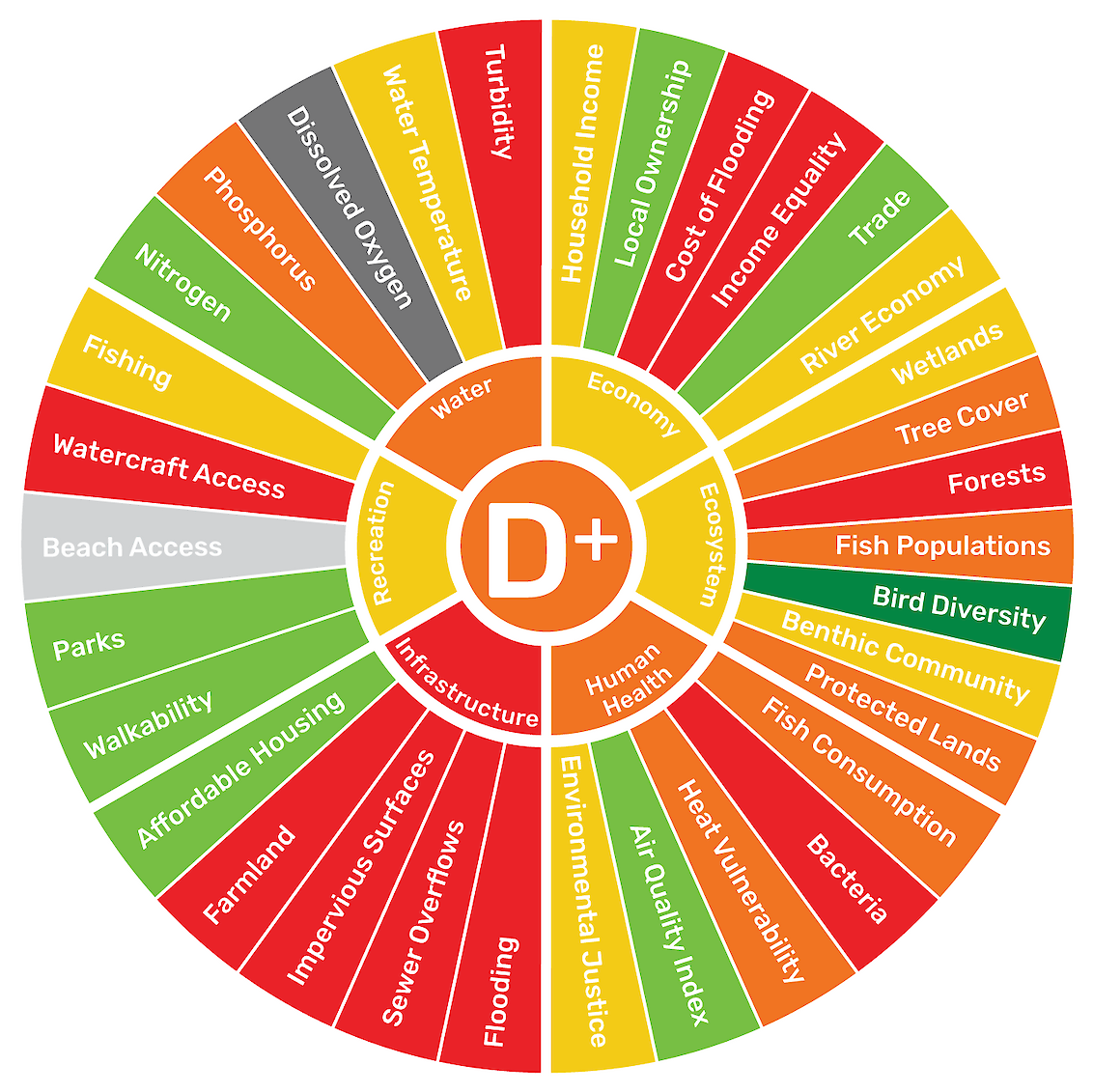The Overall Health Index is the average of the six category scores: Economy, Ecosystem, Human Health, Infrastructure, Recreation, and Water. Status of indicators within these categories was evaluated by comparing data to scientifically-derived thresholds or goals.

The Rouge River and its watershed are in Poor Condition
The Rouge River and its watershed are in poor condition (37%, D+). Of the six categories, Recreation received the highest grade, a C, with good Parks (72%) and Walkability (63%) scores. Recreation would have scored higher without a failing score for the Watercraft Access indicator (10%, F). Infrastructure is clearly the Rouge River’s biggest challenge, receiving a failing grade overall (14%, F) and failing scores for four of the five indicators: Farmland, Sewer Overflows, Flooding (0%, F), and Impervious Surfaces (5%, F).
Human Health (D) and Water Quality (D+) are both in poor condition. Bacteria is the lowest scoring indicator in the Human Health category (0%, F). Heat Vulnerability and Fish Consumption scores were in the poor range. Water Quality was in poor condition (36%, D+) but could be even lower if data for Dissolved Oxygen were available. Turbidity (8%, F) and Phosphorus (40%, C-) were the lowest scoring indicators in Water Quality.
Economy and Ecosystem both received moderate grades of C-. Local Ownership and Trade received good scores while Cost of Flooding and Income Equality both failed, two indicators that are often linked. Ecosystem overall had a moderate score but had a failing grade for Forests (16%, F) and poor scores for Protected Lands, Fish Populations, and Tree Cover. Bird Diversity had the highest score for any single indicator (89%, A) but as the river is along the Mississippi Flyway, migratory birds may be driving the scores more than local species.
